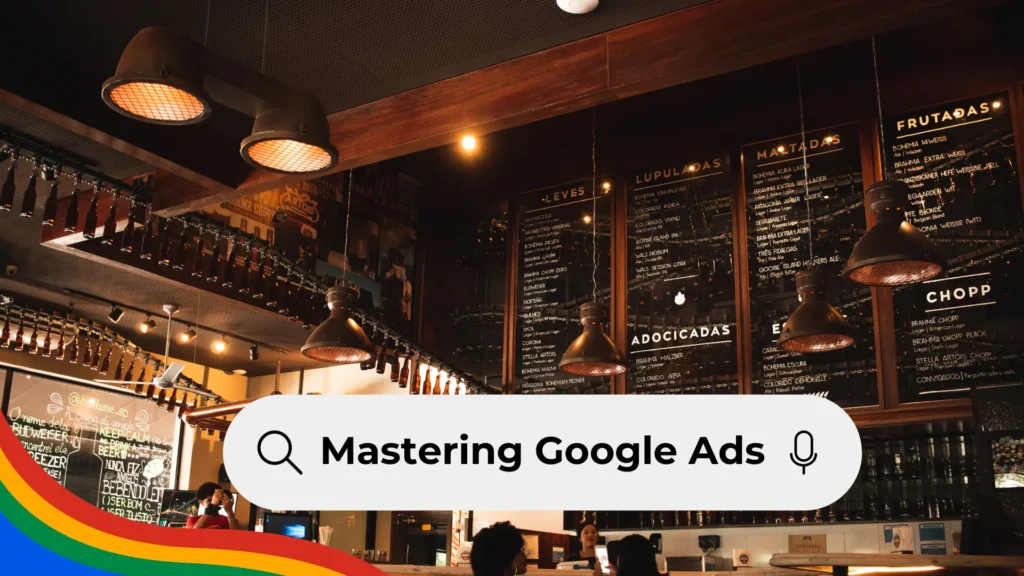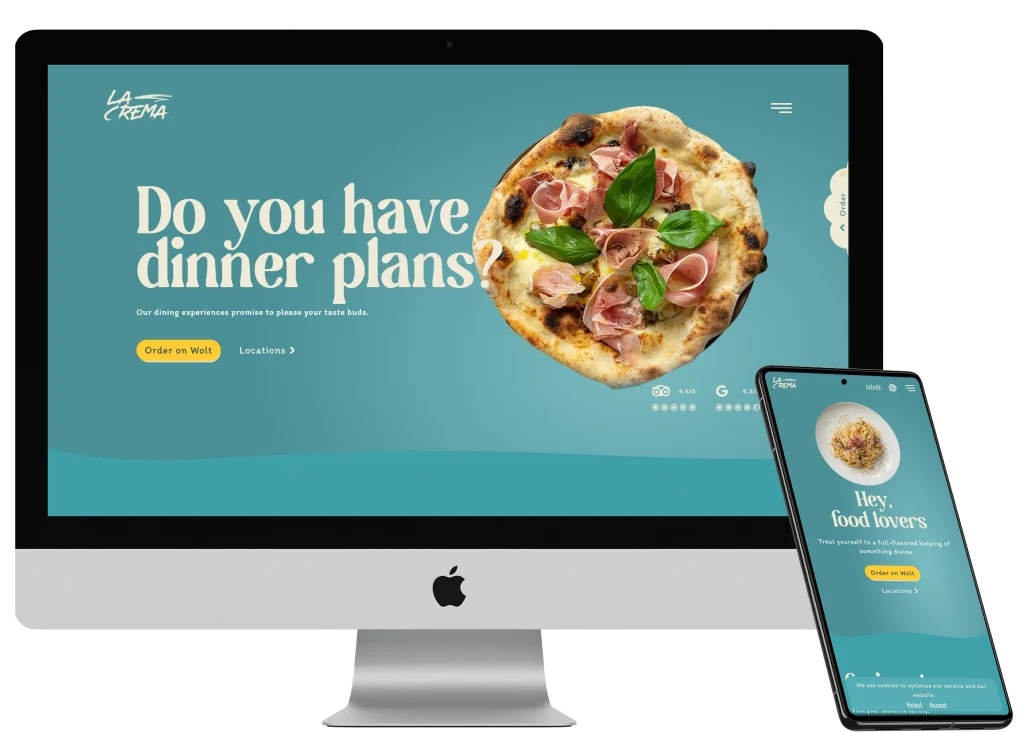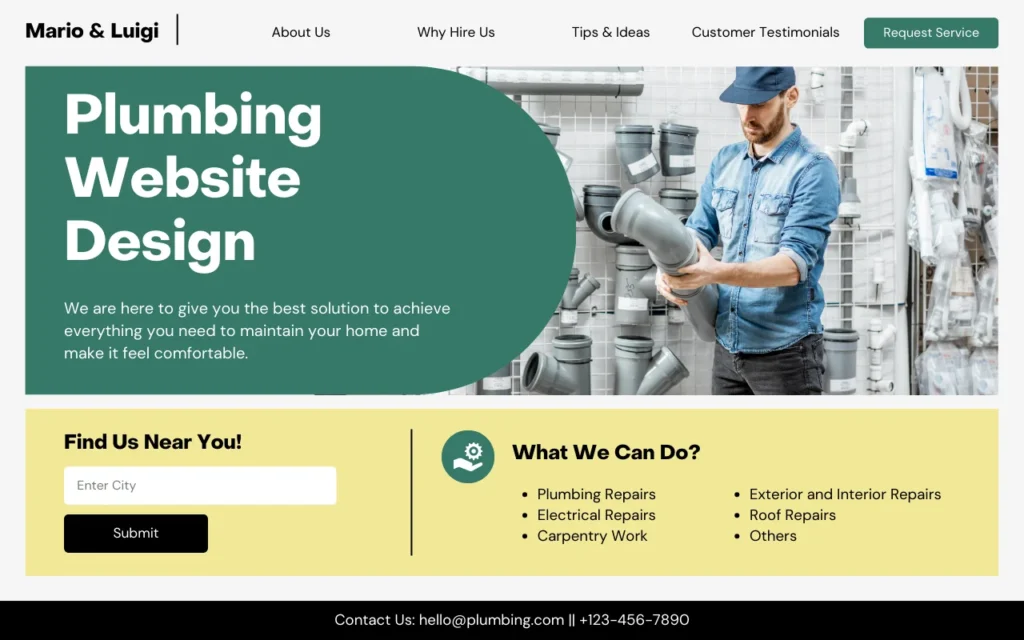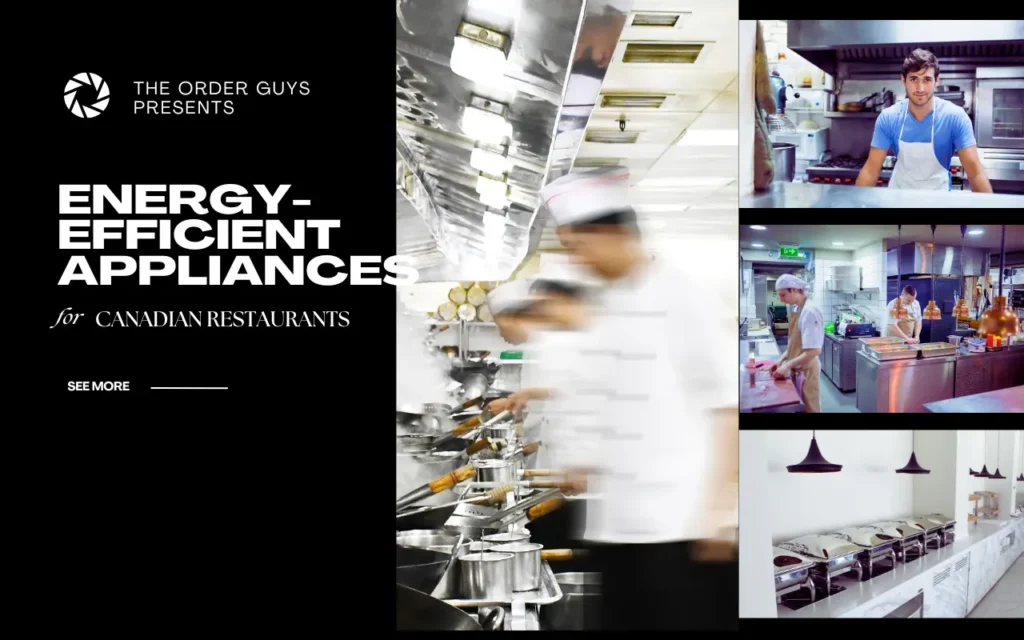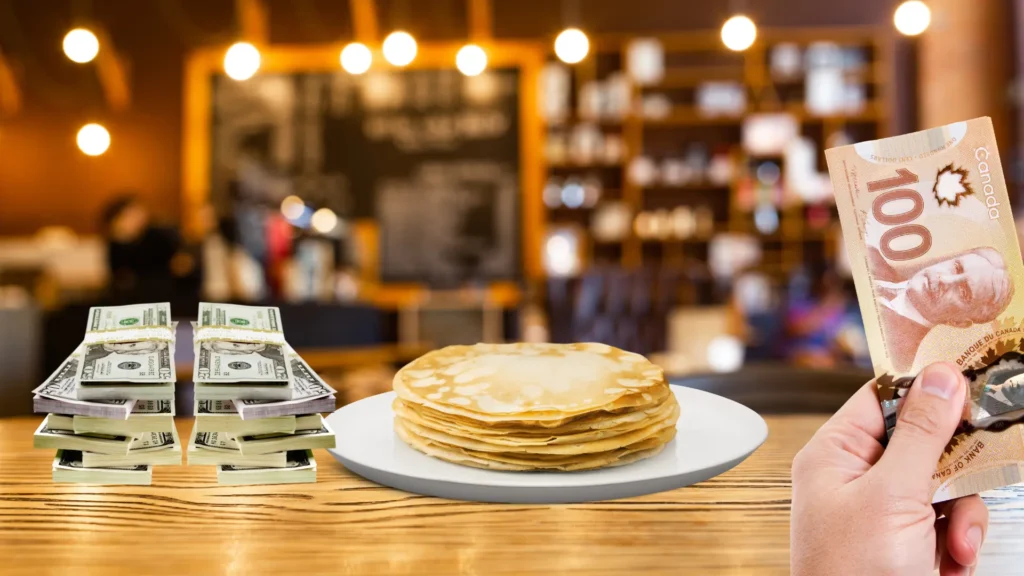Restaurant owners, if you’re looking to elevate your website’s online orders and drive more customers through your digital doors, mastering Google Ads is vital. This comprehensive guide will provide you with the knowledge and strategies needed to harness the power of paid advertising effectively. You’ll discover how to create compelling ads, target the right audience, and optimize your campaigns to maximize your return on investment. Get ready to transform your online presence and tantalize more taste buds with our expert tips!
Understanding Google Ads for Restaurants
An effective Google Ads strategy can significantly enhance your restaurant’s visibility and drive online orders. By leveraging this powerful platform, you can reach potential customers who are actively searching for dining options in your area. This not only helps to increase foot traffic but also improves your online presence, making it vital to grasp the fundamentals of Google Ads tailored for your restaurant business.
Types of Google Ads Campaigns
There are several types of Google Ads campaigns that you can utilize to promote your restaurant effectively:
| Type of Campaign | Description |
|---|---|
| Search Ads | Text-based ads that appear in Google search results when users search for relevant keywords. |
| Display Ads | Graphic ads that appear on various websites within Google’s Display Network. |
| Video Ads | Ads displayed on YouTube and other video platforms, engaging customers through visual storytelling. |
| Shopping Ads | Ads showcasing your restaurant’s menu items, allowing customers to click to order directly. |
| Local Ads | Ads designed to promote your restaurant locally, ensuring you’re visible to nearby customers. |
- Search Ads are great for targeting specific dining keywords.
- Display Ads help in visually captivating potential customers.
- Video Ads can showcase special dishes or restaurant ambiance.
- Shopping Ads enable direct online orders from menu listings.
- Local Ads ensure you attract foot traffic from nearby diners.
Thou should definitely consider experimenting with a mix of these campaigns to see what resonates most with your audience.
Key Components of Google Ads
The key components of a successful Google Ads campaign include keywords, ad copy, landing pages, and bidding strategies. You must identify the right keywords that potential diners are using to search for restaurants like yours. Your ad copy should be enticing and reflective of your restaurant’s unique offering, while your landing page needs to provide a seamless user experience for those who click through. Understanding your bidding strategies is also vital as it determines how effectively your ads compete for visibility.
Google’s platform allows you to set budgets, manage bids, and analyze performance metrics, so you can optimize your campaigns continually. Your focus should be on creating ads that encourage clicks and conversions while regularly reviewing data to understand what works best for your restaurant and customers.
Google Analytics offers valuable insights into how your ads are performing and where you can make improvements. By monitoring your click-through rates, conversion rates, and visitor behavior, you can refine your strategy and ensure that your ads are effective in generating online orders.
Targeting Options for Restaurants
Google provides various targeting options that enable you to reach your ideal audience effectively. You can target based on demographics, location, interests, and user behaviors, ensuring your ads reach the customers who are most likely to visit your restaurant. For instance, if you offer family-friendly dining, you can specifically target local families in your ads.
Additionally, you can leverage geotargeting to display your ads to users who are searching for restaurants near their current location, resulting in increased foot traffic to your establishment.
To optimize your targeting, regularly refine your audience parameters based on performance data. This means assessing who is clicking your ads and whether they are converting into actual orders or foot traffic. Continuously adjusting your targeting options will help you maximize your ad spend and ensure that your restaurant attracts the right customers.
Getting Started with Google Ads
Any restaurant owner looking to increase online orders needs to be familiar with the fundamentals of Google Ads. This powerful advertising platform can help drive traffic to your website and enhance your restaurant’s visibility in search results. By harnessing the right strategies, you can transform your restaurant’s online presence and get your menu in front of more customers than ever before. In this chapter, we will guide you through the necessary steps to set up your Google Ads account and start your first campaign.
Step-by-Step Guide to Setting Up Your First Campaign
Your first step in setting up your Google Ads campaign is to create a Google Ads account. Once your account is set up, follow these steps:
| Action | Description |
| Choose Your Campaign Type | Select either “Search” or “Display” to determine where your ads will appear. |
| Define Your Target Audience | Specify the geographic area you want to target, and consider demographic information to reach your ideal customers. |
| Set Your Budget | Decide how much you are willing to spend daily or monthly on your campaign. |
| Create Ad Groups | Organize your ads by theme, focusing on different menu items or promotional offers. |
| Write Compelling Ads | Craft attention-grabbing headlines and descriptions that highlight your restaurant’s unique selling points. |
| Choose Keywords | Identify the keywords that potential customers may use to find your restaurant online. |
Once you’ve completed these steps, you’ll be well on your way to launching an effective Google Ads campaign tailored to boost your online orders. Recall, patience is key—allow some time for your ads to gather data, and be prepared to make adjustments based on performance insights.
Defining Your Goals and Budget
If you want to make the most of your Google Ads campaigns, it’s crucial to define your goals early on. Are you looking to increase overall orders, promote a special event, or perhaps advertise new menu items? Being clear about your objectives will help shape your strategy and ensure your ads are effective. Alongside your goals, you must set a realistic budget. Consider how much you can afford to spend and what you hope to gain from your investment in advertising.
For instance, if you aim to drive a specific number of orders per week, you can allocate a daily budget that aligns with your goals. Google Ads operates on a pay-per-click model, meaning you only pay when someone clicks your ad. Monitor your spending closely to ensure you stay within budget while maximizing returns on your advertising investment.
Campaign goals should also include key performance indicators (KPIs) to track success. This will help you adjust your strategies as needed, based on the data you collect.
Selecting the Right Keywords
Keywords are the backbone of your Google Ads campaigns. They are the terms potential customers type into Google when searching for restaurants or specific menu items. Selecting the right keywords ensures that your ads appear to the most relevant audience, driving more traffic to your restaurant’s online ordering system. You can utilize tools like Google Keyword Planner to identify popular search terms related to your offerings.
When deciding on keywords, focus on a combination of broad and long-tail keywords. Broad keywords capture a larger audience, while long-tail keywords tend to convert better because they align closely with specific searches, like “best Italian restaurant delivery near me.” By incorporating both types of keywords into your campaign, you can optimize your ad visibility and effectiveness.
With effective keyword selection, you’re not just increasing the chances of your ads being seen; you’re targeting the customers most likely to engage with your restaurant. Test different keywords and continually refine your list based on performance data.
Crafting Compelling Ad Copy
Now, in the digital landscape where your restaurant competes for the attention of hungry customers, crafting compelling ad copy is necessary for driving online orders. A well-written ad can be the difference between a click and a scroll, and it’s crucial to capture your audience’s interest instantly. This starts with the ad headline, which should be engaging and informative while also conveying the unique value your restaurant offers.
Tips for Writing Effective Ad Headlines
An effective ad headline is the first impression you make on potential customers, so it’s important to make it count. Here are some tips to help you create headlines that grab attention:
- Use actionable language that conveys benefits.
- Incorporate keywords relevant to your restaurant and menu.
- A/B test different headlines to find what resonates best with your audience.
- Highlight promotions, specials, or unique aspects of your dishes.
Perceiving your target audience’s preferences can significantly enhance the effectiveness of your ad headlines.
Creating Engaging Ad Descriptions
Assuming your headline did its job and captured your audience’s attention, the ad description must now seal the deal. It’s your opportunity to provide more detail about your restaurant’s offerings, atmosphere, and what sets you apart from competitors. Use this space to highlight signature dishes from your restaurant menu, showcase customer favorites, and create an inviting image of what dining at your restaurant is like.
Tips for writing engaging ad descriptions include focusing on the emotions you want to evoke, weaving in your restaurant’s story, and emphasizing the convenience of online ordering. Make it relatable by incorporating visuals like delicious imagery and happy customer testimonials to formulate a connection with potential diners.
Utilizing Call-to-Actions for Increased Engagement
Effective call-to-actions (CTAs) are not just an icing on the cake; they are an integral part of your ad copy that directs potential customers toward taking a desired action. Phrases like “Order Now,” “Reserve a Table,” or “Get 20% Off Your First Order” create urgency and encourage users to interact with your ad. By clearly stating what you want your audience to do next, you can significantly boost conversions and drive sales.
Plus, consider placing your CTAs in strategic locations within your ad copy, ensuring they stand out. Using action-driven language and urgency will compel customers to follow through with the next step, leading to increased engagement and ultimately, more online orders for your restaurant.
Optimizing Your Ads for Better Performance
Many restaurant owners understand the basics of setting up Google Ads. However, to truly master online advertising, you must optimize your ads continuously for better performance. Performance can be influenced by various factors, which can ultimately decide how successfully your ads convert leads into actual orders. Understanding these factors will give you a leg up on the competition and garner better returns on your advertising investment.
Factors Affecting Ad Performance
Performance is affected by a multitude of variables, and identifying the right combination for your restaurant can yield significant benefits. Here are some critical factors to consider:
- Ad copy relevance
- Target demographic alignment
- Geographic targeting
- Your budget and bidding strategy
- Time of day and day of the week settings
Perceiving these elements as the fundamental roots of your advertising’s efficiency will allow you to make informed decisions that lead to increased traffic and ultimately, more online orders.
Tips for A/B Testing Your Ads
To improve your ad performance, A/B testing is an invaluable strategy. This involves running two versions of your ads simultaneously to determine which one attracts better engagement and conversion rates. Focus on elements such as headlines, ad copy, and calls-to-action, as these can significantly impact the effectiveness of your campaigns.
- Test one variable at a time to ensure accurate results
- Track performance using Google Ads’ built-in analytics
- Run tests over a sufficient period to gather meaningful data
- Use clear, actionable calls-to-action
The insights you gain from A/B testing can help you refine your campaigns and make data-driven decisions that resonate with your target audience.
With A/B testing, you also have the opportunity to develop a clearer picture of what resonates with your audience. Consider analyzing successes and failures to tweak not just your ads but also your overall marketing strategy. Testing different images, tones of voice, and even promotions can drastically change the outcome of your advertising campaigns.
- Identify which ads generate the highest click-through rates (CTRs)
- Monitor audience feedback and engagement metrics
- Apply findings from successful ad variants to future campaigns
The goal is to create ads that not only catch attention but also compel potential customers to take action.
Monitoring and Adjusting Campaigns
If you want to sustain your success in Google Ads, regular monitoring and adjustment of your campaigns are vital. A set-it-and-forget-it approach can lead to missed opportunities for optimization. Regularly examine your campaign metrics, such as CTR, conversion rates, and overall ROI, to determine how effectively your ads are performing. This will empower you to adjust strategies as needed, staying aligned with your dynamic customer preferences.
The process of monitoring doesn’t end with just data collection; you’ll need to interpret the data to make informed changes. Evaluating trends in user interactions can offer insights into which times of day or week yield the best results for your restaurant, as well as which menu items or promotions should be highlighted in your ads.
The process of ongoing monitoring and adjusting your campaigns leads to refined advertising strategies and financial efficiency. Keep a close watch on performance metrics and stay agile in adapting to market shifts, competitive pricing, and consumer behavior trends. Through this practice, you can maximize your online orders and maintain a thriving restaurant business.
Advanced Strategies for Restaurant Owners
Not every strategy works for every restaurant. As you navigate the complexities of Google Ads, consider these advanced techniques designed specifically to enhance your online order capabilities:
| Set up Conversion Tracking Optimize for Mobile Users Utilize Call-Only Ads Experiment with Geo-Targeting Adjust Bidding Strategies | Leverage Scheduled Ads Implement Dynamic Search Ads Engage with Local Inventory Ads Analyze Competitor Ad Strategies Invest in Video Advertising |
Remarketing Strategies to Re-Engage Customers
On leveraging remarketing, you can keep your restaurant top-of-mind for past visitors. By implementing Google Ads’ remarketing features, you can create personalized ads that target users who’ve previously engaged with your website or online menu. This is crucial for gently nudging them back to complete their order or check out new offers. These ads maintain visibility while encouraging repeat visits, nudging users to remember why they loved your food in the first place.
Furthermore, segmentation is key. You should categorize your audience based on their previous interactions — whether they visited your site, added items to their cart, or were once loyal customers. By crafting tailored ads for each group, you increase the chances of conversion significantly. Custom messages, special offers, or reminders about uncompleted purchases can effectively draw back previous visitors who showed interest but walked away.
Leveraging Local Ads for Local Visibility
The digital landscape offers a unique advantage for restaurants — local ads can greatly enhance your visibility within your community. By harnessing location targeting in your Google Ads campaigns, you can ensure that your restaurant is prominently featured when locals search for dining options. This helps you not only attract foot traffic but also online orders from potential customers nearby who may be unaware of your offerings.
Focus on keywords that are hyper-local and relevant to your specific area. For instance, terms including “Italian food near me” or “best sushi in [your city]” can drive significant traffic to your site. You can also use location extensions to show your restaurant’s address, making it easier for customers to locate you quickly, whether they’re looking for a dine-in experience or takeout.
Plus, consider running daily promotional ads that target patrons during mealtimes. You want to be the first name that comes to mind when someone thinks about grabbing lunch or dinner. Make sure your ads highlight any special deals or new dishes to entice local diners effectively.
Using Ad Extensions for Enhanced Listings
One of the overlooked features in Google Ads is the power of ad extensions. These are additional pieces of information you can add to your ads, making them more appealing and informative for potential diners. Extensions such as call buttons, location information, or even links to your popular menu items can increase your click-through rates significantly. Enhanced visibility translates into higher chances of conversions, especially when the information is readily available to your potential customers.
Furthermore, you should utilize these extensions strategically. For instance, if you have a catering service or daily specials, callout extensions can highlight these offerings, making your ad stand out in searches. By providing comprehensive information, you not only facilitate customer decision-making but also provide them with the most relevant details about what you can offer, either on-site or through delivery.
Remarketing can also play a vital role when you use extensions. Customers who have interacted with your ads previously will see tailored ads that jog their memory while enhancing their experience with your restaurant. By combining remarketing with ad extensions, you’ll turn potential customers into consistent patrons.
Evaluating the Success of Your Campaign
Despite your hard work in creating appealing ads for your restaurant, it’s crucial to continually evaluate the success of your Google Ads campaigns. This assessment will help you identify what’s working, what isn’t, and how you can refine your strategies to increase online orders. By conducting regular evaluations, you can make data-driven decisions that will optimize your advertising budget and maximize your return on investment.
Key Metrics to Track
Some of the most critical metrics to track in your Google Ads campaigns include click-through rate (CTR), conversion rate, and cost per acquisition (CPA). The CTR indicates how effective your ad is at capturing attention and motivating clicks, while the conversion rate shows how well your visitors complete desired actions, such as placing an order. Monitoring CPA helps you understand how much you’re spending on average to acquire each customer through your ads.
In addition, you should also focus on tracking metrics such as impressions, quality score, and customer lifetime value (CLV). Impressions tell you how many times your ad is shown, providing insight into visibility and reach. A higher quality score indicates that your ad is relevant to users, which can lower cost-per-click and improve positioning. Finally, understanding CLV will help you make informed decisions about how much you are willing to invest in acquiring new customers through ads.
Analyzing ROI from Google Ads
Metrics are imperative in analyzing the return on investment (ROI) from your Google Ads campaigns. You can measure ROI by looking at the revenue generated from your ads compared to the amount spent on advertising. This calculation will clearly show you whether your campaigns are profitable and to what extent. If your ROI is positive, you can consider increasing your ad spend; if it’s negative, you may need to rethink your strategy.
This evaluation process is vital for ensuring you remain competitive in the restaurant industry. By regularly reviewing your ROI, you not only clarify the effectiveness of your campaigns, but you also gain insights into customer behavior, preferences, and how well your ads resonate with your target audience.
Pros and Cons of Using Google Ads for Restaurants
Google Ads can be a powerful tool for driving online orders to your restaurant, but it comes with both advantages and disadvantages. Understanding these can help you make informed decisions about whether to invest your time and money in this advertising platform.
Pros and Cons of Using Google Ads for Restaurants
| Pros | Cons |
|---|---|
| Targeted Advertising | Can be Costly if Mismanaged |
| Immediate Results | Requires Constant Monitoring |
| Flexible Budget Options | Steep Learning Curve for Beginners |
| Measurable Results | Highly Competitive Space |
| Customizable Campaigns | Click Fraud Risks |
| Brand Visibility | Limited Control Over Search Engine Algorithms |
| Increased Traffic to Website | Dependence on Online Presence |
| Enhanced Local Marketing | Potential for Low Conversion Rates |
| Ability to Retarget Customers | Time-Intensive Setup |
| Cross-Promotion Opportunities | Cannibalization of Organic Traffic |
Google Ads is certainly a viable option for boosting your restaurant’s online orders, but it’s important to weigh these pros and cons carefully. Take into account your business goals and resources before exploring into a Google Ads campaign. Understanding both the advantages and challenges will equip you better to create strategies that fit your unique situation, maximizing your potential for success in the competitive online food landscape.
Running Google Ads For Restaurants Conclusion
So, as a restaurant owner striving to enhance your online orders, mastering Google Ads can be a transformative strategy. By understanding and implementing the various tools and techniques discussed in this guide, you can effectively reach your target audience, improve your visibility, and increase your revenue. Whether it’s through using location-based targeting to capture local diners or employing compelling ad copy to entice potential customers, each step you take will bring you closer to achieving your business goals. Do not forget, your success in navigating the online landscape depends significantly on continual learning and adaptation.
Ultimately, Google Ads is not just about spending money on ads; it’s about making informed decisions that drive results. By analyzing your campaign performance and adjusting your strategies accordingly, you can ensure that your efforts translate into meaningful online engagement and increased orders. Empower yourself to take charge of your restaurant’s marketing, elevate your brand presence, and foster a loyal customer base that consistently chooses your establishment. With dedication and the right approach, the potential for growth is limitless.

